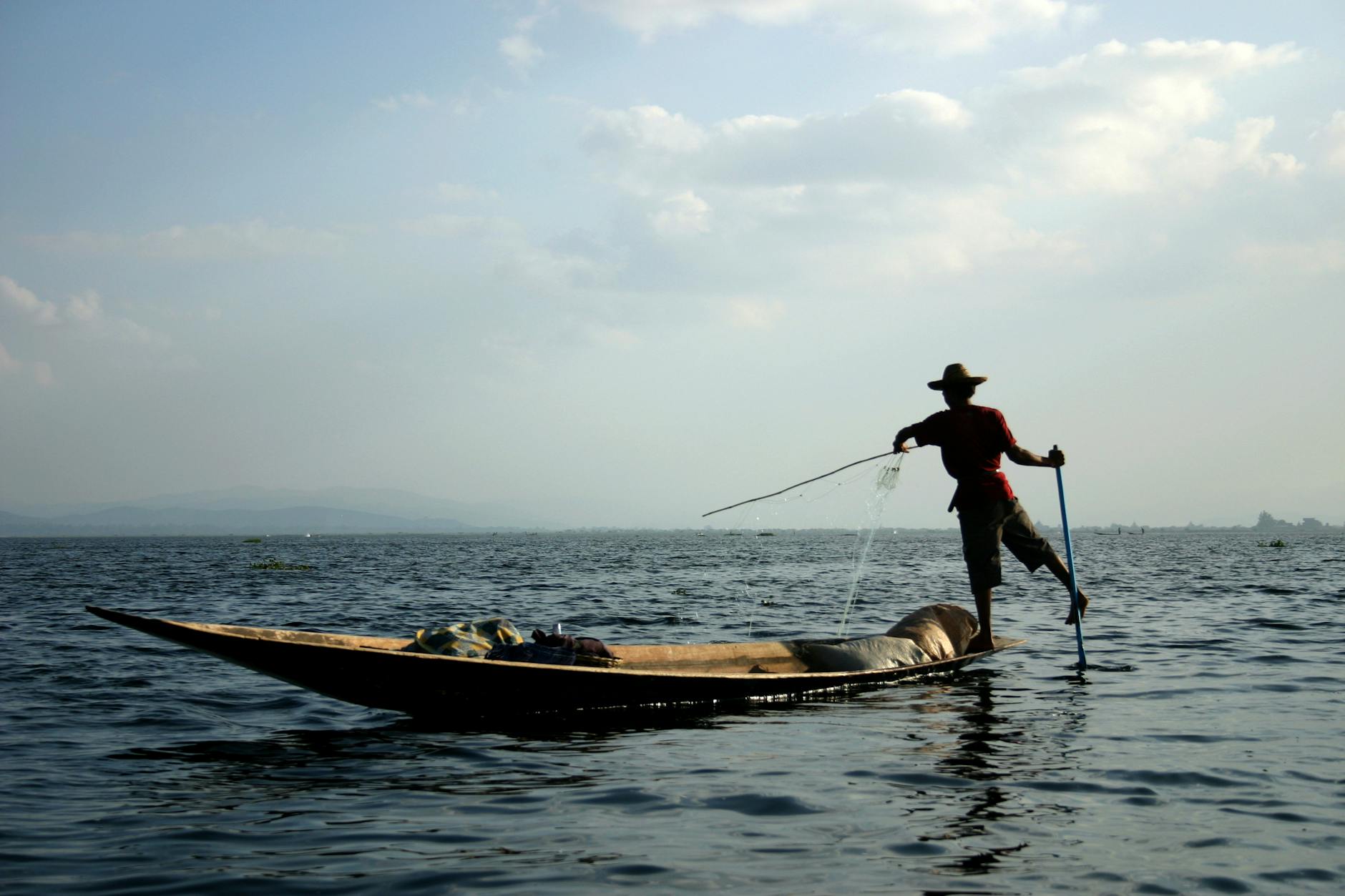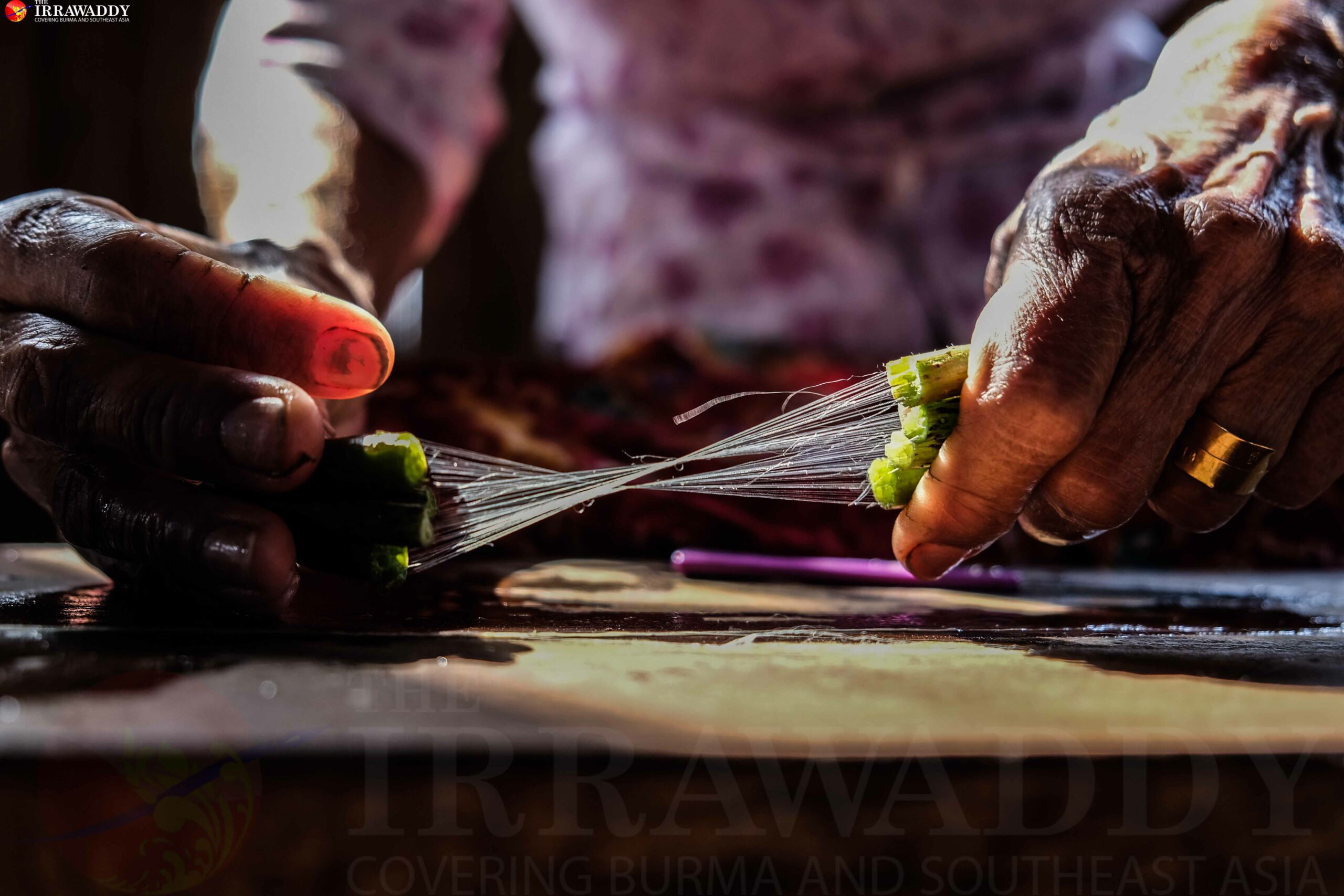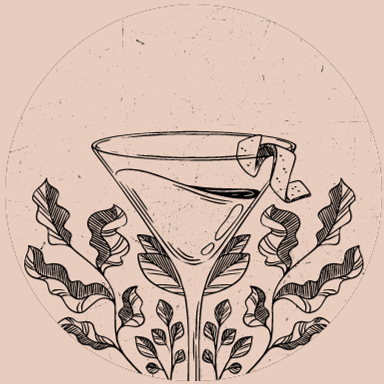I settled comfortably on a worn out woven mat covering the surface of the bamboo floor. My husband and I savored a traditional Burmese meal of htamin gyin—fermented rice blended with fish and potato—and hnapyan gyaw, or twice-fried tofu, prepared graciously by our Intha hosts.
Maung Maung, our guide, welcomed us into his home, offering a rare glimpse into the daily life of the Intha people whose lives are inextricably intertwined with Lake Inle.
After savoring a bowl of saykha hin, a subtly bitter soup that perked up my taste buds, I sipped a small cup salted brewed green tea and breathed deeply as a gentle breeze blew through the cracks and crevices that served as the house’s natural ventilation. As I looked around, I couldn’t help but notice the striking similarities between Intha homes and the bahay kubo, a traditional rural Filipino house slightly elevated from the ground and crafted from wood, bamboo, and thatched palm fronds. Whether nestled on farms or along coastal areas, these homes shared a common thread of simplicity, practicality, and a harmonious integration with the natural elements. This design ethos, rooted in working with the environment, was the secret to their remarkable adaptability and enduring resilience.
Maung Maung called us to gather around him, his eyes gleaming with the ancient wisdom. All activities ground to a halt as everyone drew close to listen to what he had to say. The cacophonous chatter that once filled the communal space tapered into a hushed silence.
“There is a Buddhist parable I wish to share,” he said as his eyes scanned the room. In the corner, an Intha woman held her toddler close. “It’s about a man who was chased by a tiger.”
In the tale, the man, fleeing from the relentless tiger, stumbles upon a well and leaps in, only to discover a venomous snake lurking at the bottom. Grasping a protruding vine, he hangs precariously between the ravenous tiger and the hissing snake. As if things weren’t bad enough, two mice began gnawing at his lifeline.

As I listened intently, my mind drifted back to the origin story of the Intha people that Maung Maung had shared with us earlier that day as our long, narrow boat navigated through Inle’s labyrinthine maze of stilted bamboo houses and floating vegetable plots.
Legend has it that the Intha were not always the “Children of the Lake”, as their name suggests. Their ancestors originally came from the vast plains of the Tanintharyi region of southern Myanmar. However, ruling Shan saophas drove them from their land, forcing them into a cruel exodus that left them literally at the water’s edge. The saophas forbade the Intha to settle on solid ground and instead compelled them to deal with the watery depths of Inle, where survival initially seemed like an improbable challenge.
The first Intha confronted a stark choice: submission to oppressive forces or adaptation to the whims of nature. Their journey, akin to the man in the parable, became a delicate balance between survival and surrender, a theme that echoed in Buddhist philosophy.
“What should the man do?” Maung Maung prompted reflection, his words carrying the weight of ancestral wisdom. Silence enveloped us, each contemplating the man’s fate.
When faced with the same question, the Intha decided to play the hand that nature and circumstance dealt to them. Originally a community deeply rooted in farming and dependent on cultivating the land for sustenance, the Intha initially felt like fish out of water. The challenge was evident: how to construct homes and cultivate farms where there was nothing but water and mud. However, they refused to see this as an insurmountable obstacle.

Instead, they built homes that not only withstood the tropical heat and relentless monsoons but also integrated effortlessly with the lake and its surroundings. The traditional bamboo houses clustered around Inle stand on stilts, their walls intricately woven from bamboo strips. These walls offer shade from the sun while still allowing air and light to permeate through small gaps, keeping the interiors cool and well-ventilated without the need for numerous windows that invite excess heat.
The raised stilt design allows air to circulate freely from all sides, while the roof overhangs shield the walls from rain and enable the thatched surfaces to dry quickly in the humid climate. Raising the houses above the water’s surface protected Intha families from seasonal floods, as the minimal resistance allowed water to flow beneath the structures without damaging them or sweeping them away.
Eventually, clusters of homes expanded into settlements that included floating markets, coastal temples and pagodas, schools, and other structures where communal life revolve around.
Inle Lake is the beating heart of its fragile ecosystem and has been the economic lifeline of the Intha community for generations. However, tapping into its resources has posed challenges. While the lake abounded with fish and sustenance, large swathes were veiled by tangled aquatic flora, demanding ingenuity in fishing techniques.
Earlier that day, we encountered a group of Intha fishermen skillfully maneuvering their boats. Rising at the stern, one leg deftly worked with the oar as their hands lowered conical nets into the water, targeting featherbacks and Inle carp. This distinctive method emerged from necessity. It was difficult to spot fish while seated because of the lake’s dense reeds and floating vegetation, necessitating this unconventional approach. What initially appeared arduous to us was, to the Intha, a natural and honed skill acquired over years.

“We learned how to fish this way as children. It’s a skill passed on from one generation to the next,” said Maung Maung as we watched the fishermen’s fluid yet acrobatic movements. “We thrive by flowing rather than resisting.”
Although leg rowing was historically a skill practiced mainly by men, we were privileged to witness several Intha women who displayed equal proficiency in this technique. Among them was a woman who effortlessly navigated the waters with a baby securely wrapped around her.
Despite the lack of arable land, the Intha ingeniously returned to their agricultural heritage. They pioneered floating garden beds, a laborious process that required them to gather weeds from the depths of the lake, ferrying them back by boat, and skillfully weaving them into buoyant beds anchored firmly by bamboo poles.
These gardens yield a bounty of vegetables like tomatoes, beans, and eggplants, essential staples in the Intha diet alongside fish. The nutrient-rich water regularly replenishes these gardens, making them exceptionally fertile. Moreover, their adaptive design renders them resilient to flooding, seamlessly adjusting to fluctuating water levels while maintaining a high level of productivity.
“I have a favorite saying that there can be no lotus flower without mud,” Maung Maung shared a famous teaching from Buddhist monk Thich Nhat Hanh as our boat glided leisurely along the narrow waterway of In Paw Khon, a village known for its community of lotus weavers. “Which means that without hardship we cannot grow.”
Although rooted in contemporary Buddhist teachings, these words deeply resonate with the Intha’s way of life, particularly in their remarkable adaptability to bloom where there was only mud and water. Among their ingenious adaptations is lotus weaving, an exquisitely intricate art form that came perilously close to fading into obscurity. Today, Inle Lake stands as one of the few remaining bastions where this fading art continues to flourish, carried forth by the weathered hands of aging lotus weavers from Kyaingkhan and In Paw Khon.
Lotus weaving in Inle Lake is said to have developed a little over a century ago when a woman named Paw Sar Ou noticed that the thread-like fibers could be meticulously extracted from the stems of lotuses growing abundantly on the lake. This flash of enlightenment, intertwined with the lotus’ profound symbolism in Buddhist philosophy as the epitome of spiritual enlightenment, ignited Paw Sar Ou’s creative spirit. Motivated by this spiritual connection, she embarked on a year-long journey of dedication and skill, transforming these fibers into a magnificent robe, a sacred offering to the temple’s revered abbot.
Today, the art of lotus weaving remains an arduous yet deeply meaningful process. It begins with the careful gathering of lotus stems, followed by the painstaking extraction and spinning of these delicate fibers using a blade. The weaving itself demands extraordinary patience and craftsmanship, each creation bearing the imprint of the weaver’s devotion and artistry. Despite the challenges faced by the dwindling number of lotus weavers, the legacy of lotus weaving perseveres at Inle Lake.

The translucent curtains in Maung Maung’s house danced gracefully as a gentle breeze wafted through. Moments later, the rumble of thunder reverberated, casting a shadow over the sunlit scene as thick, ominous clouds gathered in the sky. Raindrops began to patter against the roof, dripping in streams from the roof’s overhangs, filling the air with the earthy fragrance of wet soil.
“What should the man do?” Maung Maung posed the question once more.
In the timeless Buddhist parable, the man trapped in the well discovered a source of sweetness amidst his adversity—a beehive perched on a nearby tree, its honey dripping tantalizingly close. With a smile, he savored the honey, finding a fleeting moment of joy amid his plight, a brief respite from life’s relentless storms. The man understood the futility of panic or rage in such circumstances; instead, he embraced the inevitability of life’s challenges. Indeed, unpleasant and even perilous situations are an inescapable facet of life. His wisest course of action was to seek solace in moments of happiness within his control, however tiny or fleeting they may be.
Like the man in the well, the Intha navigated their existence through the currents of change, adapting and finding ways to flourish amidst adversity. The waters of Inle Lake, though at times turbulent and murky like the monsoons, also hold pools of ingenuity, perseverance, and the enduring human capacity to find beauty and light even in the darkest hours.
As the rain gradually eased into a gentle drizzle and eventually ceased altogether, we bade farewell to our gracious hosts and then joined Maung Maung as he led us towards the boats moored by the house.
“We’ll take a different route,” Maung Maung instructed the boatman. “It’s a bit longer, but more scenic. Let the current carry us and we’ll reach our destination without any trouble.”


Leave a comment